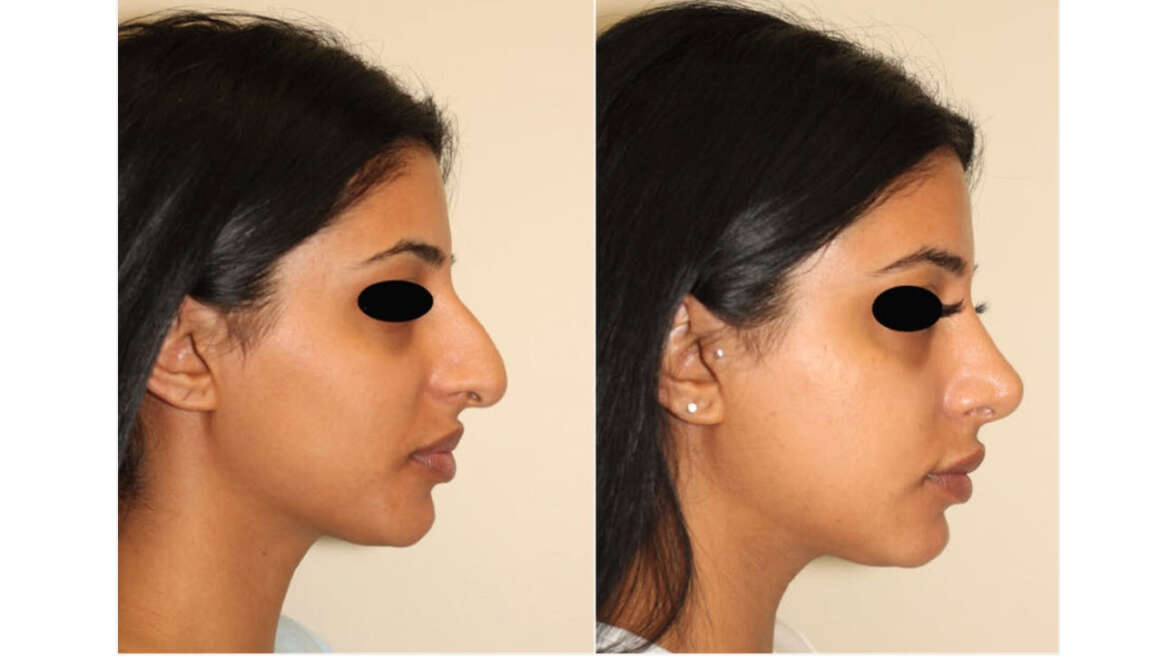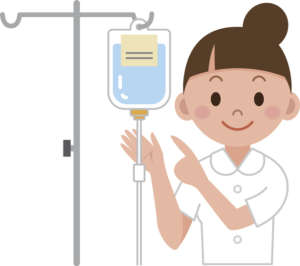Rhinoplasty surgery is a facial cosmetic surgical procedure that can improve the appearance and function of the nose. Whether you’re considering rhinoplasty for aesthetic reasons or to address breathing issues, it’s essential to do your research before committing to the procedure. Dr Denton, a leading board-certified Facial Plastic Surgeon in Vancouver, would like to share with you some of the things you need to know about rhinoplasty before you consider undergoing this procedure. Even though rhinoplasty is the most popular cosmetic surgical procedure, it is considered quite challenging and complex. That’s why it is important to select the proper surgeon to increase your chances of achieving the result you want and which will satisfy you for the rest of your life.
Definition of Rhinoplasty
Rhinoplasty is a surgical procedure that aims to reshape the nose. It is also known as a “nose job” or “nose surgery.” The upper section of the nose is composed of bone, while the lower portion is made up of cartilage. Rhinoplasty is a surgical procedure that can alter the bone, cartilage, skin, or a combination of these three structures. It is crucial to have a discussion with your rhinoplasty surgeon to determine whether rhinoplasty is the right option for you and what outcomes can be expected.
During the rhinoplasty procedure, the surgeon can modify the size and shape of the nose to improve its appearance, correct breathing difficulties, or both. The facial plastic surgeon may remove bone or cartilage or add tissue or synthetic implants to achieve the desired result.
How is Rhinoplasty Surgery Performed?
Rhinoplasty surgery takes about 1-2 hours and is typically performed under general anaesthesia but Dr Denton prefers to use twilight anaesthesia whenever possible. He prefers to use this form of anaesthesia because his patients can avoid side-effects such as an increase in blood vessel dilation which leads to increased bleeding during surgery and thus results in bruising, swelling and increases recovery time. It is administered intravenously and you sleep throughout the procedure, without the aid of a breathing tube, unaware of the surgery taking place. The medications used will enable you to feel comfortable during and after your rhinoplasty procedure.
During the procedure, your surgeon will make incisions either inside the nostrils or on the columella (the strip of tissue between the nostrils) to access the underlying bone and cartilage. The surgeon will then reshape the nose by removing or adding tissue as needed. Finally, the incisions will be closed and a splint or cast will be placed on the nose to support it as it heals.
Why Rhinoplasty is Considered a Complex Surgical Procedure
Rhinoplasty surgery is considered a complex cosmetic surgical procedure because the nose is a highly visible facial feature, and any changes made during your surgery can have a significant impact on your appearance. Therefore, your facial plastic surgeon must have a thorough understanding of facial anatomy and an aesthetic sense to create a nose that is harmonious with the rest of your face.
Secondly, the nose has a complex structure consisting of bone, cartilage, and soft tissue. Your facial plastic surgeon must carefully manipulate these structures to achieve the desired result while preserving the function of your nose.
Thirdly, rhinoplasty can be challenging because each patient’s nose is unique, and there is no one-size-fits-all approach. Your surgeon must tailor the procedure to your specific needs and goals, which requires experience and skill.
Finally, rhinoplasty can have both cosmetic and functional goals. While the primary aim of the surgery is often to improve the appearance of the nose, the surgeon must also consider how the changes will affect your breathing and airflow through the nose.
Rhinoplasty is a Personalized Procedure
No two noses are exactly alike, and the same goes for rhinoplasty procedures. A skilled rhinoplasty surgeon like Dr Denton will take the time to assess your unique facial features, nasal structure, and personal preferences to create a personalized treatment plan that addresses your specific concerns. Be sure to choose a surgeon who has experience in rhinoplasty and is willing to work with you to achieve your desired outcome.
Dr Denton understands that every patient has distinctive expectations, which is why he is always prepared to have an in-depth discussion regarding every aspect of your rhinoplasty. His private operating facility in Vancouver is equipped with state-of-the-art technology to provide you with an accurate computer-generated visualization of the expected outcome of your rhinoplasty. He strongly believes that every patient must be adequately educated about the procedures they are contemplating to make informed decisions as an equal member of the decision-making team.
Dr Denton’s personalized approach to patient care is what sets him apart. He understands that each patient is unique, and that’s why he takes the time to listen to your concerns and goals. He uses his extensive experience and expertise to develop a tailored treatment plan that is personalized to your individual needs.
At Dr Denton’s private operating facility, you can expect a comfortable and safe environment with exceptional care from his experienced staff. They strive to ensure that you feel at ease throughout the process and provide you with the support you need.
Rhinoplasty Surgery Can Address Both Aesthetic and Functional Concerns
While many people choose rhinoplasty for cosmetic reasons, such as reducing the size of their nose or refining its shape, the procedure can also address functional issues. These issues can lead to multiple problems including decreased exercise tolerance and sense of smell, poor sleep, noisy breathing and chronic bad breath. Certain functional problems are treatable during rhinoplasty surgery but this is evaluated on a case-by-case basis. Dr Denton notes that it’s essential to choose a rhinoplasty surgeon who can address both aesthetic and functional concerns.
Incisions and Techniques for Rhinoplasty Surgery
During rhinoplasty, incisions are typically made inside the nostrils or on the columella (the strip of tissue that separates the nostrils). This allows the surgeon to access the bone and cartilage that make up the structure of the nose. There are two main techniques used in rhinoplasty: open and closed.
Closed Surgical Technique
In closed rhinoplasty, all incisions are made inside the nostrils, which means that there are no visible scars. This technique is typically used for minor corrections, such as reducing the size of the nostrils or refining the tip of the nose. Closed rhinoplasty usually results in less swelling and a faster recovery time than open rhinoplasty.
Open Surgical Technique
In open rhinoplasty, an additional incision is made on the columella, which allows the surgeon to lift the skin and access the underlying structures of the nose more easily. This technique is typically used for more complex corrections, such as straightening a crooked nose or rebuilding the nasal structure after trauma. Open rhinoplasty usually results in more swelling and a longer recovery time than closed rhinoplasty. However, Dr Denton utilizes the open approach almost exclusively. By performing open rhinoplasty he is able to achieve superior precision, especially for challenging noses for which altering the nasal structures can be much more complex. This technique provides a higher degree of accuracy and the ability to reshape the nose in a manner that will help him achieve the desired outcome.
What You Should Expect After Your Rhinoplasty
After your rhinoplasty, a small plastic cast is placed on the nose to protect it and maintain alignment during the initial healing period. A light gauze dressing is placed in the nose during surgery and is removed from the nose before transfer from the operating room to the recovery room. All sutures used are resorbable and therefore do not have to be removed. Stitches placed inside the nose dissolve on their own, however, skin stitches, placed during an open rhinoplasty, are removed in 5 to 7 days.
The Healing Process
During the healing process, you will feel puffiness around the nose and eye area, where they may also experience some swelling and bruising for several days. The swelling and bruising can be managed by applying cold compresses for the first 48 hours.
Normally, you can shower and gently wash your hair 3 days after surgery but you must be careful not to wet the cast while bathing. Bending, heavy lifting and straining should be avoided during the first seven days as these activities may increase the amount of bruising and swelling as well as the risk of bleeding. In two weeks, you can perform light non-cardiac exercises which can be gradually increased over the ensuing seven days.
The Recovery Can Vary
The recovery time for rhinoplasty can vary depending on several factors, such as the extent of the procedure and your body’s natural healing ability. Generally, you can expect to take about 7 to 10 off work to allow for your initial healing. Almost all of the swelling should subside gradually over the first two months after your procedure. However, your long-term healing process leading to a full recovery can take about one year for the nose to fully heal and for all the swelling to subside. That’s why it’s essential to follow your rhinoplasty surgeon’s post-operative care instructions carefully.
Rhinoplasty Has Risks and Complications
Like any surgical procedure, rhinoplasty carries some risks and complications. Common complications include bleeding, infection, and adverse reactions to anaesthesia. Hence, it is vital that you choose an experienced board-certified Facial Plastic Surgeon, like Dr Denton, who can minimize these risks and provide you with a safe and successful procedure.
Before and After Rhinoplasty Photos
Before and after photos can be a helpful tool for you to visualize the potential results of your rhinoplasty. Your surgeon will most likely have a portfolio of photos from previous patients that you can look at, or you can search online for photos that are similar to your desired results. Dr Dentont always reminds his patients that every person’s nose is unique and that your results may vary. He helps you determine what is achievable for your specific nose and face shape by also using computer imaging to demonstrate to you the expected result following your rhinoplasty procedure.
You Should Have Realistic Expectations
It’s important to have realistic expectations when considering rhinoplasty. While the procedure can improve the appearance and function of your nose, you must be realistic about your expectations and your goal should be a new nose that is in balance or harmony with the rest of your facial features. D. Denton emphasizes the importance of open communication between the patient and surgeon to ensure that realistic goals are established before the procedure.
Book a Consultation with Dr Denton Today
If you’re considering rhinoplasty, the best way to learn more about the procedure is to book a consultation with a qualified and experienced Vancouver rhinoplasty surgeon. Dr Denton is a Vancouver rhinoplasty expert with over 20 years of experience performing both cosmetic and functional nose surgeries. He has a clear understanding of the nasal structure and the surgical techniques required to perform it flawlessly and provide you with the desired results. He takes a personalized approach to each patient and is dedicated to helping them achieve their desired outcome. Book your consultation today to learn more about what rhinoplasty can do for you. His West Coast Cosmetic Surgery Centre is located in the heart of Vancouver’s medical corridor, just one block from Vancouver General Hospital.


